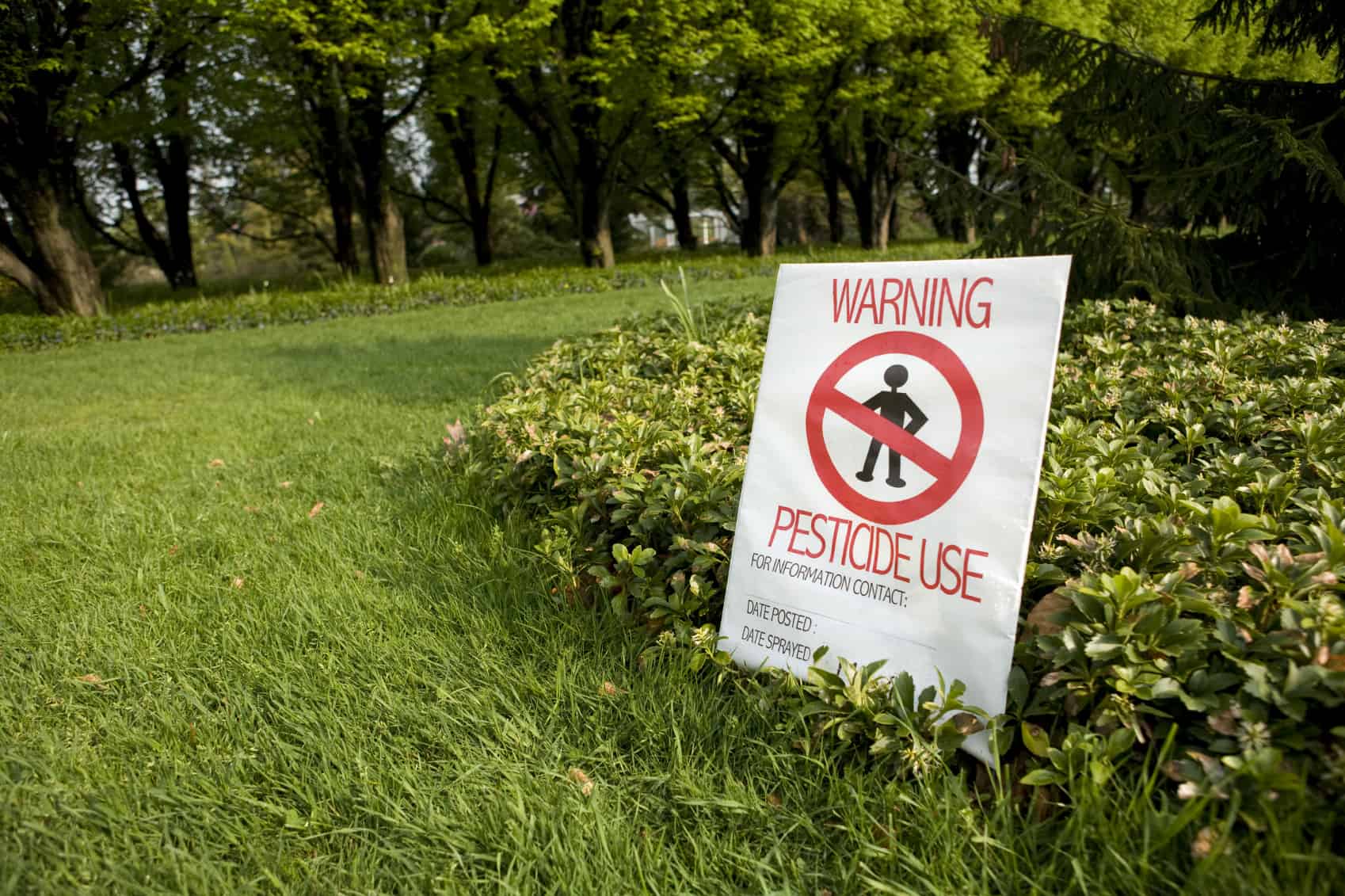
A physician and expert on healthy lawns writes that chemicals used on lawns and gardens may be tied to cancer and endocrine disruption, and many of these are considered unsafe for farm workers, as well. During the spring, many homeowners, farmers, and gardeners use an array of chemicals including, glyphosate, carbaryl, malathion and 2,4-D. These […]
 A physician and expert on healthy lawns writes that chemicals used on lawns and gardens may be tied to cancer and endocrine disruption, and many of these are considered unsafe for farm workers, as well.
A physician and expert on healthy lawns writes that chemicals used on lawns and gardens may be tied to cancer and endocrine disruption, and many of these are considered unsafe for farm workers, as well.
During the spring, many homeowners, farmers, and gardeners use an array of chemicals including, glyphosate, carbaryl, malathion and 2,4-D. These dangerous chemicals may end up in our drinking water and some of the compounds or what the compounds break down into, may lead to increased cancer rates and hormone disruption, according to The New York Times.
Last year, a study found an association with glyphosate, the active ingredient in Monsanto’s Roundup, and Parkinson’s disease and Parkinson’s-related brain disorders. According to a report from the Organic Authority, Roundup is the best-selling pesticide in the world and is the companion chemical application to many of the company’s genetically modified seeds including corn, soy, canola, and cotton.
A 2008 U.S. Pesticide Residue Program Report revealed that detectable concentrations of the organophosphate, malathion, were found in 28 percent of frozen blueberries, 25 percent of strawberries, and 19 percent of celery sampled. Malathion is sprayed in mosquito-control programs and organophosphate pesticides can be found in some flea and tick products and have been linked to childhood leukemia. Some experts believe organophosphates are responsible, in part, for the very significant and growing colony collapse disorder, which kills honeybees. Honeybees are critical to food pollination.
The Environmental Protection Agency (EPA) just proposed regulations to reduce farm worker exposure to dangerous pesticides and indicated that it is accepting comments on the proposed changes through mid-June. The proposed rules are intended to minimize incidences of non-Hodgkin’s lymphoma, prostate cancer, Parkinson’s disease, and lung cancer, The New York Times wrote.
Homeowners are also being exposed to similar risks if they are using these toxins on their yards and in their gardens. What’s more, the chemicals, say experts, are not needed and elimination of the use of these dangerous compounds will lead to improved water quality. Many feel that it is not the localized, rare use that is the problem when dealing with an infestation or an invasive species, but the ongoing and broad use of synthetic weed killers, fertilizers, and pesticides, The New York Times reported.
According to the United States Fish and Wildlife Service, homeowners are using up to 10 times more chemicals, per acre, when compared to farmers. Worse, some of these chemicals may rub off on children, pets, and wildlife and most are sent, with rainwater, into streams, groundwater, lakes, and rivers. Tests confirm that the chemicals are contaminating our water supplies, The New York Times indicated.
A United States Geological Survey released in 1999 found at least one pesticide, and usually more, in nearly every stream and fish it tested, as well as about half of the well samples tested nationwide. Although the amounts have often been deemed as “acceptable,” today, science recognizes that these compounds typically have a cumulative effect, according to The New York Times. In 2009, the Endocrine Society published a scientific statement that it based on 485 citations from research papers that revealed mounting proof that serious health threats are the result of endocrine-disrupting substances in our environment. Endocrine disrupters are associated with elevated risks for breast and prostate cancers, thyroid abnormalities, and infertility. This paper and others have also found that exposure to chemical contaminants is tied to diabetes and obesity.


